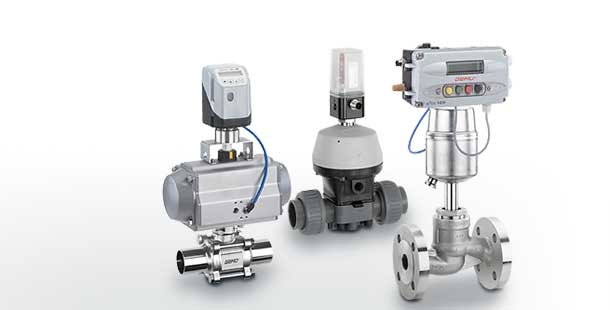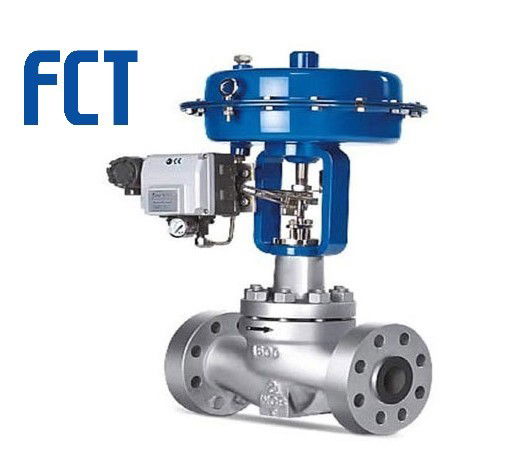The Function of Control Valves in Fluid Flow Management Systems
The Function of Control Valves in Fluid Flow Management Systems
Blog Article

Maximize Energy Cost Savings and Comfort With Advanced Structure Automation Controls
In the world of modern style and center administration, the assimilation of innovative structure automation controls stands as an essential development. By harnessing the power of automation, buildings can adjust, respond, and advance in methods that were once unimaginable.
Energy Performance Perks
Power effectiveness benefits can dramatically minimize power intake and functional costs in buildings. Energy-efficient systems, such as innovative building automation controls, can maximize the usage of resources like heating, illumination, and air conditioning, leading to lower power expenditures over time.
Furthermore, improved energy performance can prolong the life expectancy of structure equipment and systems. By operating a lot more effectively, a/c systems, light, and other building parts experience much less deterioration, leading to minimized maintenance and replacement costs. Furthermore, energy-efficient structures typically command greater property worths and rental rates, offering lasting economic benefits to proprietors.
In addition, power effectiveness can improve passenger convenience and efficiency. Correctly regulated interior atmospheres with optimal lights and thermal problems develop a more pleasurable and conducive office, resulting in enhanced worker fulfillment and efficiency. Generally, the power effectiveness advantages related to innovative structure automation controls are complex, including expense financial savings, ecological stewardship, and passenger well-being.
Improved Convenience Control
Enhancing convenience control in structure settings calls for a sophisticated combination of advanced automation systems for optimum owner well-being. By using advanced building automation controls, centers can tailor the indoor setting to fulfill the certain requirements and choices of passengers. These systems make it possible for exact law of lighting, temperature level, and air flow, producing a effective and comfy atmosphere. Occupant fulfillment and performance are carefully connected to thermal comfort, making it vital to have systems in area that can adapt to changing conditions in real-time.
Boosted convenience control exceeds fundamental temperature adjustments. It consists of functions such as individualized setups, tenancy sensing units, and all-natural light use to produce a responsive and dynamic atmosphere. By including these innovative controls, buildings can not only improve comfort yet additionally improve energy effectiveness by maximizing system operations based upon actual tenancy and use patterns. Eventually, focusing on occupant comfort via advanced automation systems brings about a much more delightful and healthier indoor atmosphere.
Functional Efficiency Improvements

Moreover, the application of real-time surveillance and analytics devices enables building drivers to determine power inadequacies and functional abnormalities without delay. By continually monitoring power usage patterns and system efficiency metrics, changes can be made in real-time to enhance power usage and make sure peak functional efficiency. control valves. Additionally, including need reaction methods right into structure automation controls can even more improve functional effectiveness by dynamically adjusting my website power use based upon grid conditions and pricing signals
Indoor Environment Optimization
Reliable interior environment optimization is an essential element of structure automation controls, ensuring occupants' comfort and health while maximizing power savings. By utilizing advanced sensors and controls, constructing automation systems can continually keep track of and readjust temperature, humidity levels, air quality, and ventilation to produce an optimal indoor atmosphere. Preserving comfy and regular conditions not just boosts owner contentment yet likewise increases productivity and overall health.
Indoor climate optimization also plays an important function in energy performance. By fine-tuning ventilation, home heating, and air conditioning systems based on real-time data and occupancy patterns, constructing automation controls can significantly decrease energy intake - control valves. Carrying out techniques such as demand-controlled ventilation and thermal zoning can assist lessen power waste while ensuring that each location of the building gets the necessary conditioning.

Lasting Environment Development
Structure automation regulates not just maximize indoor climate conditions for power performance and owner convenience however also lay the foundation for developing a sustainable atmosphere through strategic monitoring of sources and systems. By integrating advanced structure automation modern technologies, such as sensors, actuators, and intelligent software program, centers can keep an eye on and change energy usage in real-time to lessen waste and decrease their carbon footprint. These systems make it possible for predictive upkeep, determining potential concerns prior to they intensify and maximizing devices performance to improve longevity and performance.
Additionally, sustainable setting creation expands beyond power administration to encompass water preservation, waste reduction, and indoor air top quality enhancement. Building automation controls can control water usage, identify leaks, and guarantee correct waste disposal methods, adding to overall sustainability efforts. Furthermore, by regulating and keeping track of air flow and filtration systems, these modern technologies enhance passenger health and anonymous wellness and efficiency while reducing power consumption related to cooling and heating procedures.
Final Thought
Finally, advanced building automation manages deal significant benefits in terms of power financial savings, convenience control, operational efficiency, indoor climate optimization, and developing a lasting environment. By executing these controls, structures can attain optimum performance while decreasing energy consumption and boosting occupant comfort. It is obvious that the usage of innovative automation modern technology is essential in improving building performance and producing a much more lasting future.
Power effectiveness advantages can dramatically reduce energy consumption and operational costs in structures. Overall, the energy efficiency benefits associated with advanced building automation controls are diverse, including expense financial savings, ecological stewardship, and occupant wellness.
In addition, integrating demand response strategies right into structure automation controls can even more enhance functional effectiveness by dynamically adjusting power usage based on grid problems and prices signals.
Building automation controls not just enhance indoor environment conditions for power performance and occupant comfort but also lay the foundation for producing a lasting atmosphere through critical management of resources and systems.In final thought, advanced structure automation controls deal significant benefits in terms of power financial savings, convenience control, functional efficiency, interior environment optimization, and creating a sustainable atmosphere.
Report this page